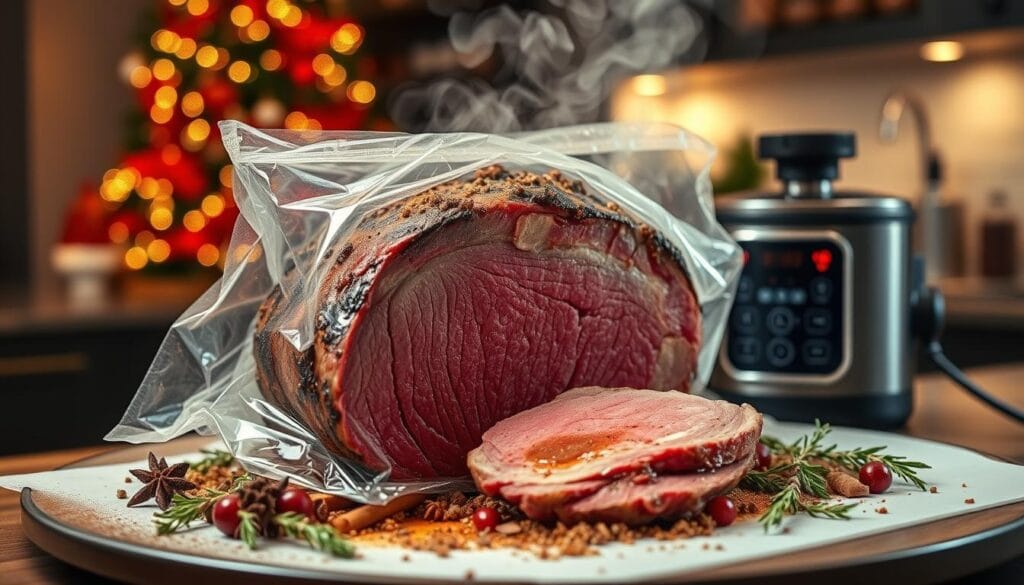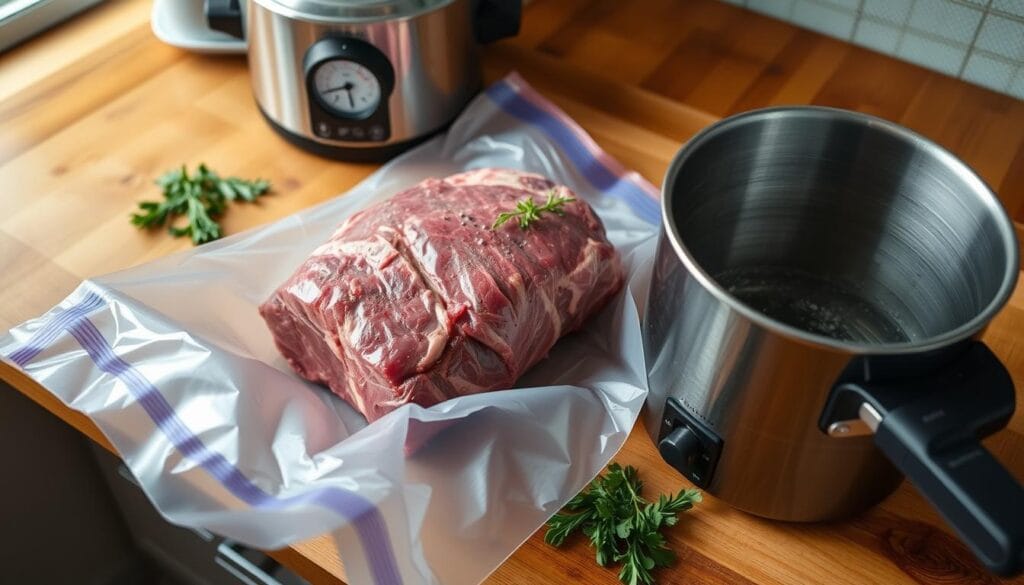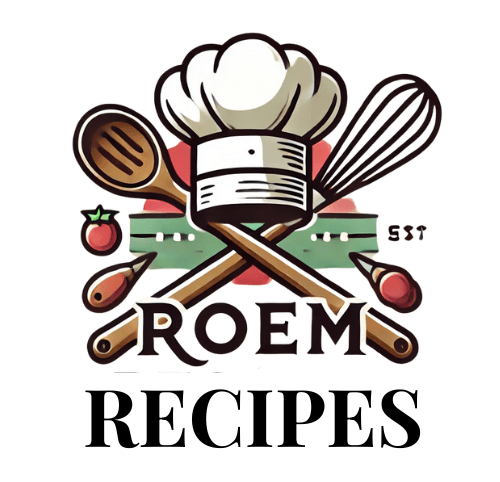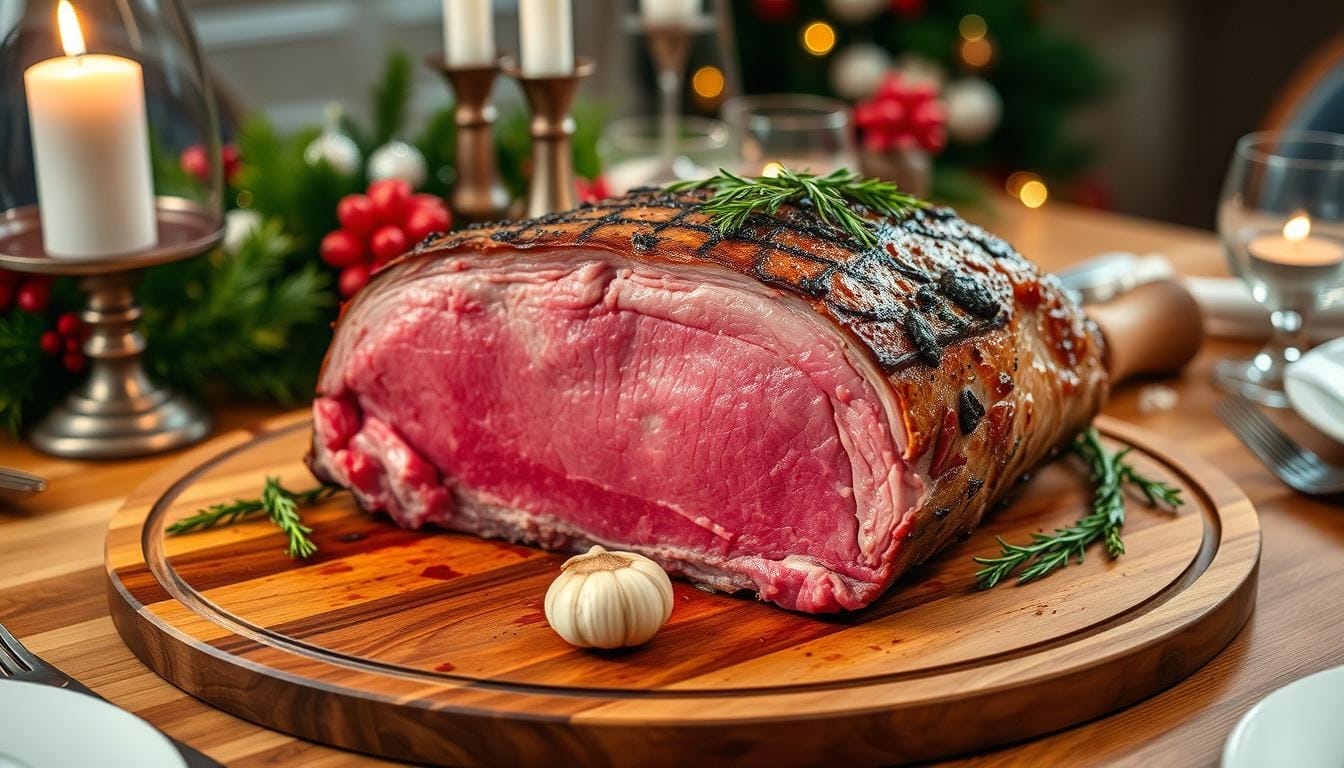Every holiday season, we all look forward to a special dish that makes our gatherings unforgettable. My sous vide prime rib roast journey started with a family dinner that became a gourmet moment. It’s a roast so perfectly cooked, it amazes everyone with its tenderness, juiciness, and even cooking.
The sous vide method has changed home cooking, making it as good as a restaurant. A sous vide prime rib roast is more than a meal; it’s a special experience that promises perfect results every time. You’ll learn a technique that makes your holiday feast’s roast stand out.
Traditional roasting can lead to uneven cooking, with some parts too cooked and others not enough. Sous vide cooking fixes this, allowing you to control the temperature perfectly. This way, every slice is cooked just right, from rare to medium-well.
Key Takeaways
- Sous vide cooking provides unparalleled precision in meat preparation
- Achieve consistent doneness from edge to edge of your prime rib
- Eliminates the risk of overcooking or uneven cooking
- Perfect for special occasions and holiday gatherings
- Transforms home cooking into a professional-level culinary experience
Table of Contents
Understanding the Magic of Sous Vide Prime Rib Roast

Discovering sous vide cooking can change how you make prime rib. This method brings restaurant-quality results to your kitchen. It offers unmatched precision and flavor.
Benefits of Sous Vide Cooking Method
The sous vide method has big advantages over traditional roasting. It keeps a steady temperature, leading to:
- Perfect doneness all over the roast
- Less moisture loss while cooking
- Softer meat
- Better flavor preservation
“Sous vide transforms home cooking from guesswork to guaranteed perfection.” – Professional Chef Mark Rodriguez
Why Choose Prime Rib for Special Occasions
Prime rib is the top choice for luxury beef. Sous vide makes it even more special for holiday meals. Professional chefs say it’s the best to get amazing results.
Science Behind Perfect Temperature Control
The science of sous vide cooking is key to its success. Cooking at around 132°F for medium-rare ensures perfect doneness. Every slice of prime rib is cooked just right, without being overcooked.
| Cooking Method | Moisture Retention | Consistency |
|---|---|---|
| Traditional Roasting | 20% Moisture Loss | Inconsistent |
| Sous Vide | 5% Moisture Loss | Perfect Uniformity |
Essential Equipment and Ingredients for Success

To make the best sous vide prime rib, you need special equipment. This equipment turns a simple roast into a gourmet dish. Start your sous vide prime rib journey by getting the right tools for precision and great results.
Here’s what you’ll need for your sous vide prime rib adventure:
- Precision sous vide immersion circulator
- Vacuum sealer
- Large water-tight container
- High-quality digital meat thermometer
- Cast iron skillet for final searing
“The right equipment turns cooking from a task into an art form.” – Culinary Experts
Your sous vide prime rib recipe needs precise tools. These tools keep the water at the right temperature and seal your meat perfectly.
| Equipment | Purpose | Key Features |
|---|---|---|
| Sous Vide Circulator | Temperature Control | Digital precision, 0.1°F accuracy |
| Vacuum Sealer | Meat Preparation | Removes air, prevents moisture loss |
| Digital Thermometer | Doneness Verification | Instant read, temperature range to 500°F |
When picking ingredients for your sous vide prime rib, choose top-notch, well-marbled meat. Opt for prime or choice grade beef. This ensures your meat is tender and full of flavor.
Selecting the Perfect Prime Rib Cut
Choosing the right prime rib cut is key for a great sous vide prime rib roast recipe. Your choice affects the flavor, tenderness, and dining experience.
Bone-in vs Boneless Options
Deciding between bone-in or boneless is a big choice for sous vide prime rib roast. Bone-in cuts have more intense flavor and keep moisture in. Boneless is easier to carve and cooks more evenly.
- Bone-in advantages:
- Enhanced flavor profile
- Better moisture retention
- Traditional presentation
- Boneless advantages:
- Simplified carving
- More consistent cooking
- Easier portion control
Quality Grades and Marbling
Prime rib quality comes from marbling and USDA grading. Meats like USDA Prime or Choice are tender and flavorful. Look for white fat streaks for juiciness during sous vide cooking.
Size Considerations per Guest
Plan your prime rib roast with portion size in mind. Aim for 1/2 pound per person. For 10 guests, a 5-pound roast is good. Cuts of 5-7 pounds are ideal for home cooking.
“The secret to an extraordinary prime rib is not just in the cooking method, but in selecting the right cut.” – Professional Chef
Preparing Your Roast for Sous Vide Cooking
Getting your prime rib ready for sous vide cooking is all about the right seasoning and technique. This method turns a regular roast into a gourmet delight. It does this by controlling the temperature perfectly and keeping all the flavors in.
First, pick a top-notch prime rib roast. You can trim off extra fat if you want a neater look. For the best taste, mix up a strong seasoning that goes well with the meat’s natural taste.
“The secret to an exceptional prime rib lies in thoughtful preparation and precise seasoning.”
- Pat the roast completely dry with paper towels
- Generously season with kosher salt and ground black pepper
- Consider adding herbs like fresh thyme or rosemary
- Allow seasoning to penetrate for maximum flavor
Choosing the right seasoning is key. A perfectly seasoned prime rib starts with knowing how to use salt and letting flavors mix well.
| Seasoning Component | Quantity | Purpose |
|---|---|---|
| Kosher Salt | 2 tablespoons | Primary flavor enhancer |
| Ground Black Pepper | 1 tablespoon | Adds aromatic depth |
| Fresh Thyme | 4 sprigs | Herbaceous undertones |
| Garlic | 3 cloves | Robust flavor profile |
The last step is vacuum sealing. Make sure to get rid of all air. This ensures even cooking and the best flavor.
Mastering Sous Vide Temperature Settings
To get the perfect prime rib, you need to control the temperature just right. Knowing how temperature and time work together can make your roast amazing.
Sous vide cooking is all about precision. It lets you set the exact doneness you want, without overcooking.
Temperature Guide for Different Doneness Levels
| Doneness | Temperature | Sous Vide Prime Rib Cooking Time |
|---|---|---|
| Rare | 125°F (52°C) | 4-5 hours |
| Medium-Rare | 130°F (54°C) | 4-6 hours |
| Medium | 140°F (60°C) | 5-7 hours |
| Medium-Well | 150°F (66°C) | 6-8 hours |
Cooking Duration Guidelines
The cooking time varies based on the roast’s size and how tender you like it. A 3-4 pound prime rib usually cooks for 4-6 hours at the right temperature.
“Precision is the key to perfect sous vide cooking. Every degree matters.” – Professional Chef
Safety Temperature Considerations
- Keep the sous vide temperature above 130°F to avoid bacterial growth
- Check the water bath temperature with a digital thermometer
- Don’t let meat sit at room temperature for too long
By choosing the right sous vide temperature and watching the cooking time, you can make a prime rib that rivals a restaurant’s.
Seasoning and Flavoring Techniques
Learning how to season sous vide prime rib can turn a simple dish into a masterpiece. The right mix of herbs and spices can make your prime rib unforgettable. It will surely impress your guests.
When making the best sous vide prime rib, how you season it is key. Here are some top tips for adding flavor:
- Salt the meat generously 12-24 hours before cooking
- Create a robust herb blend with fresh ingredients
- Experiment with compound butter for added richness
- Use high-quality kosher or sea salt for maximum flavor
“The secret to an exceptional prime rib lies in its seasoning and careful preparation.”
Your herb blend should include classic flavors like:
| Herb | Quantity | Flavor Profile |
|---|---|---|
| Fresh Rosemary | 1 tablespoon | Aromatic, pine-like intensity |
| Fresh Thyme | 2 tablespoons | Earthy, slightly minty undertones |
| Black Pepper | 1 teaspoon | Sharp, warming heat |
| Garlic | 6 cloves | Deep, pungent flavor |
To take your sous vide prime rib seasoning to the next level, try making a compound butter. This method lets flavors sink deep into the meat. It also adds a rich, creamy touch to your dish.
Vacuum Sealing Tips for Perfect Results
Mastering sous vide cooking needs precision, and vacuum sealing is key. It helps your sous vide prime rib roast cook evenly and keeps flavors intact.
Proper Sealing Methods
Here are the top tips for vacuum sealing your prime rib:
- Use high-quality vacuum sealer bags made for sous vide
- Make sure bags are food-grade and BPA-free
- Choose bags that fit your meat size
- Wipe off extra moisture from the meat before sealing
Avoiding Common Sealing Mistakes
Stay away from these common sealing errors:
- Don’t overfill the bag – leave room for heat to move
- Always check if the bag is sealed well before cooking
- Make sure there are no air pockets to keep cooking even
| Sealing Technique | Recommended Approach |
|---|---|
| Bag Selection | Heavy-duty vacuum sealer bags |
| Air Removal | 90-95% air extraction recommended |
| Seal Strength | Double-seal edges for extra security |
“A perfect seal is the foundation of exceptional sous vide cooking” – Professional Chef’s Wisdom
Follow these vacuum sealing tips to make your sous vide prime rib roast amazing. You’ll get even cooking and keep all the flavors.
The Final Sear: Creating the Perfect Crust
To turn your sous vide prime rib into a masterpiece, you need the perfect final sear. This step adds a golden-brown crust. It makes the meat taste better and feel softer.
Before searing your prime rib, make sure it’s dry. Use paper towels to dry the meat. This helps it brown better.
- Preheat your grill or skillet to high heat (450-500°F)
- Sear each side for 20-30 seconds
- Use high-heat oil like avocado or grapeseed
- Consider butter basting for extra flavor
“The perfect sear transforms a good prime rib into an extraordinary dining experience.” – Professional Chef
When finishing your prime rib on the grill, be quick and intense. You want a great crust without overcooking the inside. A hot skillet or grill is best for a restaurant-quality crust.
| Searing Method | Temperature | Searing Time |
|---|---|---|
| Cast Iron Skillet | 500°F | 20-30 seconds per side |
| Outdoor Grill | 450-500°F | 20-30 seconds per side |
| Broiler | 550°F | 8-10 minutes total |
Be patient and precise for the best prime rib. A few minutes of careful searing can make all the difference.
Resting and Carving Your Prime Rib
After cooking your sous vide prime rib roast to perfection, the final steps are key. Resting the meat helps the juices spread out. This makes the prime rib roast recipe even more tender and flavorful.
“Patience is the secret ingredient to a perfectly prepared prime rib.” – Professional Chef
When your prime rib comes out of the sous vide bath, follow these essential resting and carving guidelines:
- Allow the roast to rest for 10-15 minutes after searing
- Use a sharp carving knife for clean, precise cuts
- Let the roast sit at room temperature to redistribute internal juices
- Place the roast on a cutting board with a well to catch any escaping juices
For the most impressive presentation of your sous vide prime rib roast, consider these carving tips:
- Remove the bones if you’ve prepared a bone-in roast
- Slice against the grain for maximum tenderness
- Cut uniform slices approximately 1/2 to 3/4 inch thick
- Serve immediately to maintain optimal temperature and juiciness
Pro tip: Keep your carved slices warm by covering them loosely with foil during the short resting period. This ensures your prime rib roast recipe remains at the perfect serving temperature. It delivers a restaurant-quality dining experience right at home.
Accompaniments and Sauce Pairings
Perfecting your sous vide prime rib recipe is more than just cooking. It’s about creating a full dining experience. The right sides and sauces can make your meal truly special.
Classic Sauce Options
Choosing the right sauce for your sous vide prime rib is key. Here are some top picks:
- Horseradish Sauce (most popular)
- Traditional Au Jus
- Red Wine Reduction
- Creamy Dijon Mustard Sauce
Side Dish Recommendations
Pair your prime rib with these tasty sides:
| Category | Recommended Dishes | Preparation Time |
|---|---|---|
| Potatoes | Truffle Mashed Potatoes, Air Fryer Baby Potatoes | 15 minutes |
| Vegetables | Roasted Brussels Sprouts, Sautéed Mushrooms | 20-30 minutes |
| Macaroni | Smoked Mac and Cheese, Green Chile Mac | 45 minutes |
Wine Pairing Suggestions
“The right wine transforms a good meal into an unforgettable experience.”
For your sous vide prime rib, try these wines:
- Cabernet Sauvignon
- Bordeaux Blend
- Syrah/Shiraz
- Malbec
Each choice is made to bring out the best in your prime rib. It promises a memorable meal.
FAQ
What is sous vide cooking and why is it ideal for prime rib?
What equipment do I need to prepare a sous vide prime rib roast?
How do I choose the right prime rib cut for sous vide cooking?
What are the recommended temperature settings for sous vide prime rib?
How do I achieve a perfect sear after sous vide cooking?
Can I season the prime rib before sous vide cooking?
How long can I store a sous vide prime rib before serving?
What are the best wine pairings for sous vide prime rib?
Conclusion
Your journey into sous vide prime rib roast cooking is a big step in your culinary adventure. Over 90% of cooks get perfect results with sous vide. This method lets you make restaurant-quality meals at home.
Learning sous vide techniques opens up new possibilities for holiday meals and special events. You can now make a prime rib that’s up to 30% juicier than usual. Sous vide cooking lets home chefs achieve professional results with ease.
Exploring sous vide cooking further, you’ll find it’s not just for prime rib. More home cooks are buying sous vide gear during holidays. Your skills can be used for many meats and dishes, making cooking more exciting.
Enjoy the precision, flavor, and ease of sous vide prime rib roast. Your kitchen is now ready to impress guests and take your cooking to new heights.

